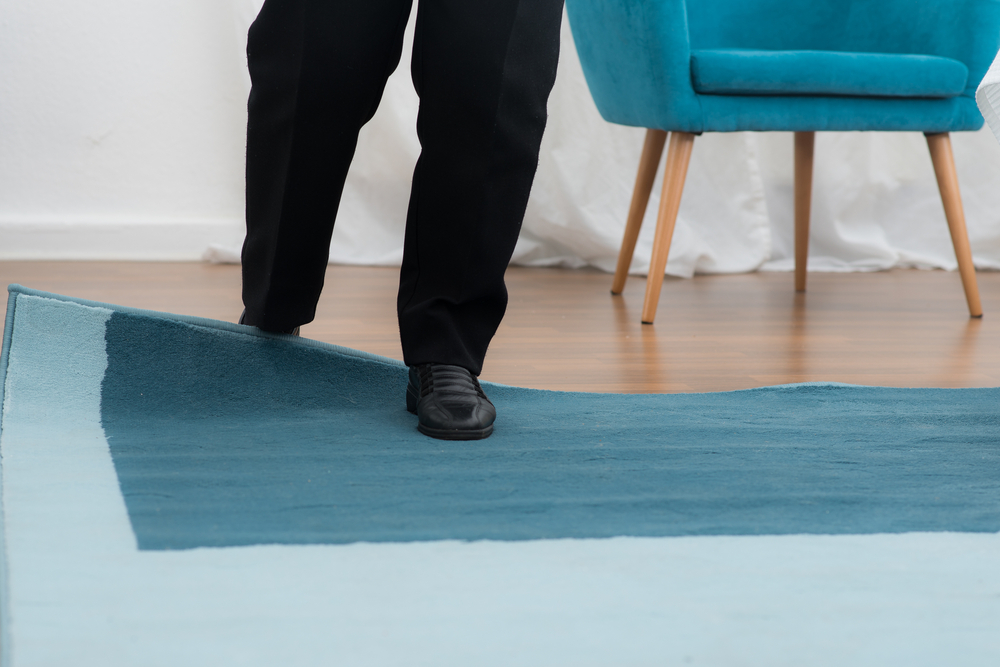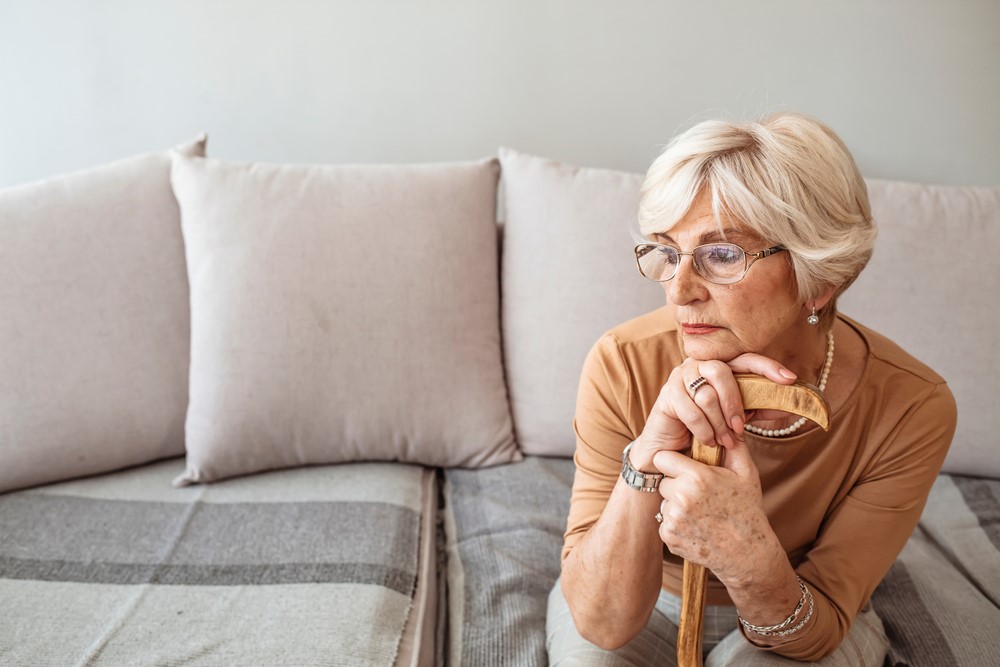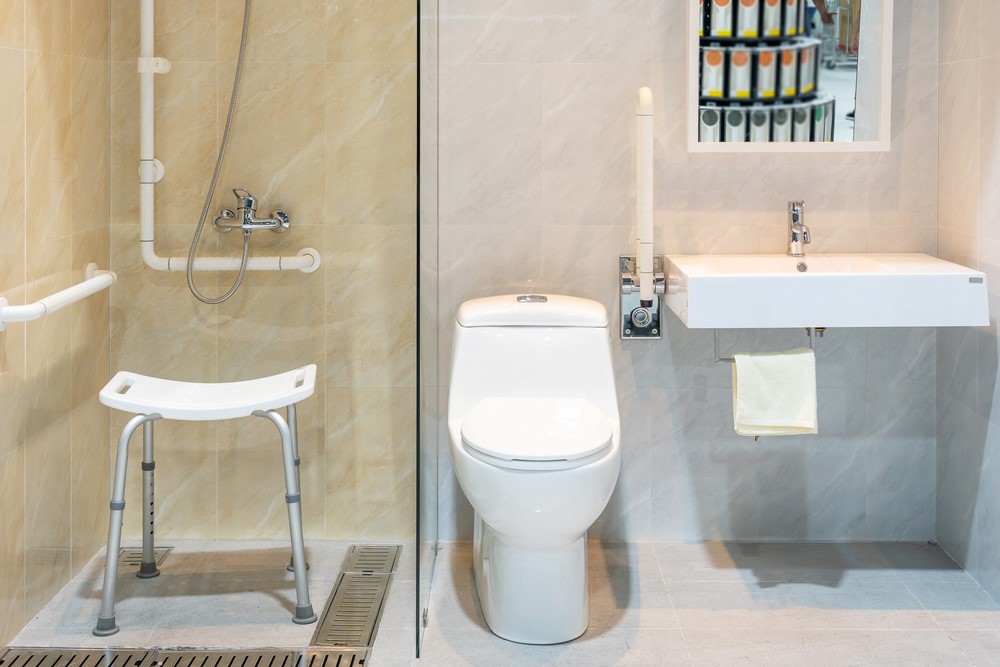
Falls are one of the most common injuries. They can happen anywhere and often completely out of the blue – making it essential to take steps to decrease fall risk.
In fact, every single year, millions of people in the United States will experience a fall, both in and outside the home. Some of these falls may be minor, but others can be major and result in head trauma, lacerations, and hip injuries.
These statistics make it so very important to figure out how to decrease fall risk.
Why Falls Matter So Much For Seniors

They’re More At Risk
The first reason to decrease fall risk for seniors is that they’re more vulnerable. Seniors often have multiple chronic conditions, including ones that can affect their mobility and their reaction times. And, even when seniors are healthy, they often can’t move as fast as younger people.
Problems with eyesight, memory, or cognition can make seniors vulnerable too, as it becomes more difficult for them to spot hazards around the home or remember where problem areas are. The edges of a mat, the corner of a table, or even the leg of a chair could easily become a trip hazard.
There may be other challenges too. For example, some medications can cause dizziness or lightheadedness, increasing the risk of falls, even when there are few trip hazards. Other medications and some health conditions may delay response times. So, while a younger person may be able to trip and correct themselves before falling, a senior may fall instead.
Injuries May Be Worse
The challenges of aging and health conditions can mean that seniors are affected more by falls. For example, anyone on blood thinners is more vulnerable to bleeding and bruising. A fall could even quickly become life threatening due to blood loss.
Seniors with problems in their bones and joints might be more likely to experience breaks and fractures than younger people. The recovery time for seniors can be longer too and the injury might not fully heal.
Plus, among adults aged 65 years and older, falls are the single highest cause of fatal and non-fatal injuries. This highlights just how serious the problem can be.
Falls Can Affect Independence
Falls can also make it much harder for older adults to live independently, especially while they are recovering.
If the senior lived alone beforehand, they may need a caregiver or some other in-home support until they have recovered. In some cases, the senior might end up in a nursing home or assisted living facility, especially if there is no one around to support them while they recover.
Falls can affect independence in another way too.
Seniors often feel more vulnerable after a fall and may be afraid that they will fall again. This can make them very cautious, where they attempt to avoid situations that might put them at risk of a fall.
Sometimes, this means that seniors become much less active than they were before. This contributes to muscle weakness, which then increases fall risk, rather than decreasing it.
Seniors Are Even More Vulnerable After A Fall
After a fall, it is much harder to move around following a significant injury, such as a twisted ankle or a broken shoulder. Plus, the senior may need to move in an unfamiliar way, which can make it more difficult to avoid falls. If steps to decrease fall risk aren’t taken by then, the senior can continue to be at risk.
So, regardless of whether the senior has had a fall or not, it’s essential to decrease fall risk around the home. Thankfully, there are plenty of ways to do so.
Powerful Ways to Decrease Fall Risk
Regardless of your budget, there are simple approaches you can take around the home to reduce the risk of falls and help keep elderly family members safe. These tips are worth considering even if a fall seems unlikely because falls are not always predictable.
1. Keep Walkways Clear
Walkways around the home can often get cluttered, making navigation more challenging.
While you may already keep the walkways clear of obvious obstacles, things like electrical cords, phone cords and small objects are often easily missed.
Getting cords out of the way may require creative solutions, but they are a major fall hazard and easily forgotten about (especially in the dark).
2. Keep the Home Well Lit
Regardless of how tidy your home is, there will always be some things that people can potentially trip over.
Making sure your home is well-lit can help to make sure that everyone can see anything on the floor and avoid any potential trip hazards.
This is especially important for seniors who have memory issues, as they may not recall where stationary trip hazards are.
Soft night lights are also an effective way of keeping hallways well-light for navigation without the use of bright lights. These also work well for a multi-person household, as no one is going to flip the night lights off out of habit.
3. Make Surfaces Slip-Proof
Focus on making sure that any potentially slippery surfaces have non-slip coverings. This includes areas like tiled and varnished floors, even if they don’t immediately seem like they would be slippery.
Rugs can be a good choice for this on floors, as long as they have enough grip not to slide around on the floor. For stairs, nonslip treads are a good option.
There are also many other options that you can find at stores, such as nonslip sprays that help to give tiled floors extra traction.
4. Take Extra Measures in the Bathroom

Bathrooms can pose a particularly high risk for falls because the water and steam from showers make everything slick.
There is a range of approaches that can be used for how to decrease fall risk in the bathroom.
A nonslip adhesive mat for the bottom of the bathtub or shower is one simple way to prevent a fall.
Grab rails should also be installed on the walls of the bathroom and the shower to make getting in and out of the shower.
Putting a plastic stool on the bottom of the shower can also be an effective tool as it gives seniors somewhere to rest and can make the process of getting in and out safer. Be sure it is fitted to the senior’s height, so they can sit down and get up off the chair without too much difficulty.
While there isn’t any way to completely negate the risk of falls, fall prevention techniques can help to minimize the risks and protect your family.
5. Be Aware of Cognitive Decline
Cognition can play a key role in fall risk. Often, as people age they experience cognitive impairment/decline or they may begin to develop dementia. These issues can make it much harder for the person to navigate around the home and can increase fall risk significantly.
If this seems like a potential issue, one good tip is to get the senior evaluated for cognitive impairment.
Knowing whether or not your relative has issues with cognitive impairment can significantly help you work out what approaches to take to protect them and to decrease the risk of falls. The physician who conducts the test may also be able to offer some recommendations about what approaches to take.
6. Watch for Over-Medication
Some medications can have negative impacts on a person’s coordination, which may also serve to increase their fall risk.
Caregivers should make sure to keep an eye on the medication use of their family member. Specifically, it is important to watch that the senior is not taking too much medication. Additionally, it is important to watch out for any complications with new medications, as sometimes these can have unexpected outcomes.
7. Choose Clothing Carefully
Some clothing types can make falls more likely and should be avoided. In particular, long pants, dresses or skirts can all act as a trip hazard, especially if they have a lot of material. One good approach is to hem these shorter so that they make tripping much less likely.
Another way of reducing fall risk is to use velcro shoes instead of shoes with shoe laces. This reduces the potential for the laces to get in the way. Likewise, velcro shoes mean that seniors do not have to struggle to get them on, which is another definite advantage.
Feeling Overwhelmed?
Check out our Caregiving Consulting service for personalized support and guidance.

Leave a Reply